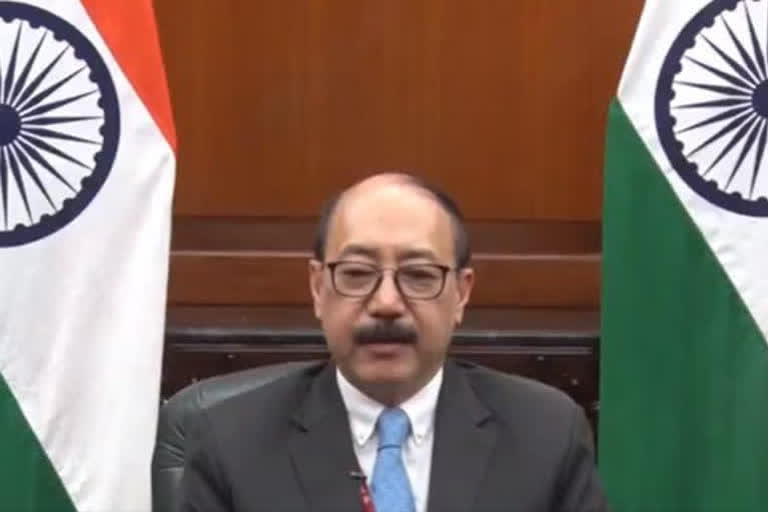New Delhi: India has always stressed in interactions with Chinese interlocutors that a normal bilateral relationship is contingent on peace and tranquillity in the border areas, Foreign Secretary Harsh Vardhan Shringla said on Sunday.
Underlining that China is the second-largest economy in the world and India has a large trade profile with it, Shringla said clearly India has to continue to work on the economic relationship with the neighbouring country, but it has to be calibrated based on the progress on important issues that are critical to both countries politically.
Talking about the "recent disturbances" on the India-China border areas in Eastern Ladakh, Shringla, while speaking at a session of the Asia Economic Dialogue, said, "We in our interactions with our Chinese interlocutors have always made the point that a normal bilateral relationship is contingent upon peace and tranquility in the border areas."
This is a sine qua non (absolutely necessary) and this is something both sides have accepted as part of their treaty obligations, Shringla said at an online session of the Dialogue organised by the Pune International Centre.
READ: Keep tractors ready as you may have to reach Delhi anytime: Rakesh Tikait to farmers
"Now as we disengage and as there is some forward movement in the resolution of some of the recent border friction points...obviously we have to see what else is required," he said.
"It is a very long border that we have with China and we are only talking about one small point on the border.
"We are trying to now see whether we can apply similar principles in sorting out some of the other areas which are in the Ladakh sector, some other sectors that we are talking about, and to see how else we can move forward on the issue of managing our long but contentious border with China in a manner that allows both countries to sort of maintain a level of semblance of normalcy," the foreign secretary said.
The border standoff in Eastern Ladakh between the Indian and Chinese armies erupted on May 5 last year following a violent clash in the Pangong Lake area and both sides gradually enhanced their deployment by rushing in tens of thousands of soldiers as well as heavy weaponry.
Earlier this month, the armies of the two countries concluded the withdrawal of troops and weapons from the north and south banks of Pangong Tso in the high-altitude region.
